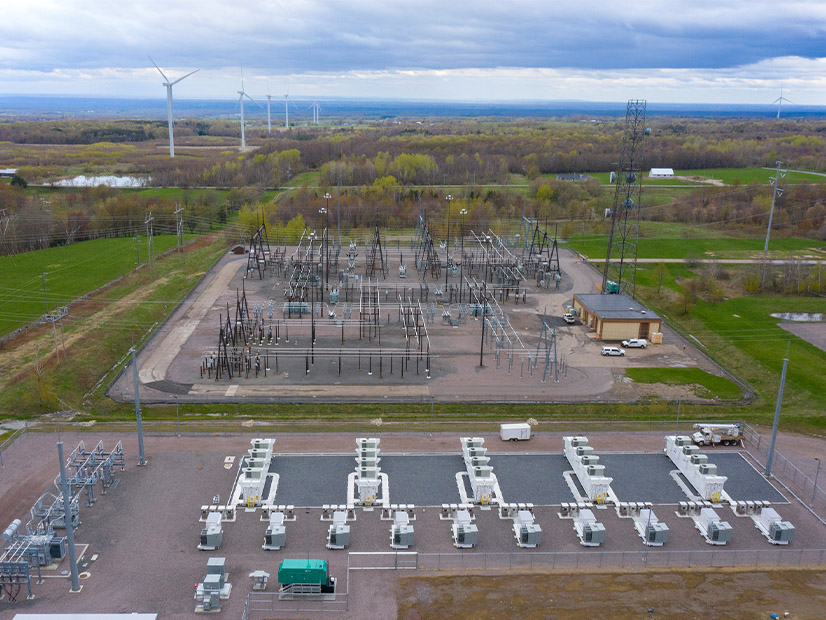CAISO marked a key milestone in its Western expansion efforts Dec. 20 after FERC approved nearly every aspect of its proposed Extended Day-Ahead Market (EDAM).
The commission’s 181-page ruling rejected only one provision in the extensive proposal: a temporary measure designed to ensure interim compensation for any transmission providers that suffer financial losses during their transition into the new market (ER23-2686).
“CAISO’s proposal to improve the performance of its existing day-ahead market with new products, and to offer balancing authority areas outside CAISO’s current footprint the opportunity to participate in and benefit from a new day-ahead market, will create significant savings for consumers in Western states,” FERC Chair Willie Phillips wrote in a concurring opinion.
The ISO filed the EDAM proposal in August, not long after SPP began making significant inroads in the West with its own Markets+ day-ahead offering, setting the stage for a competition that could see the region divided into two different markets in the coming years. (See CAISO Files EDAM Proposal with FERC and Regulators Propose New Independent Western RTO.)
EDAM, an extension of CAISO’s real-time Western Energy Imbalance Market (WEIM), is the product of a nearly five-year initiative by the ISO and Western electricity sector stakeholders. The ISO paused the effort for a year after persistent heat waves in August and September 2020 caused rolling blackouts in California and strained grid conditions in the wider West. (See CAISO Promotes EDAM Effort in Forum.)
FERC’s relatively clean ruling signaled a solid endorsement of those efforts.
“Yesterday, we accepted CAISO’s extended day-ahead market (EDAM) proposal and the accompanying improvements to its day-ahead market,” FERC Commissioner Allison Clements posted on X (formerly known as Twitter) on Dec. 21. “I am excited by the continued developments in the West and am happy to support today’s [sic] order.”
CAISO CEO Elliot Mainzer said in a statement that he was “deeply appreciative of FERC’s decision and grateful for all the hard work that got us to this important milestone. As we turn the corner into 2024, we are excited to keep our momentum on implementation and to immediately begin working with stakeholders to address the one area FERC has asked for additional information for its consideration.”
Andrew Campbell, chair of the WEIM’s Governing Body, hailed the approval as “a landmark moment for cooperation in the West.”
“EDAM builds on the success of the WEIM real-time market by allowing participants to lower costs, reduce environmental impacts and improve reliability during the critical day-ahead planning period,” Campbell said. “With this market, the West will also be more resilient to unexpected changes in weather and other grid conditions.”
DAME Products
CAISO’s proposal consisted of two broad sections: one outlining a set of Day-Ahead Market Enhancements (DAME) intended to better align day-ahead market outcomes with real-time conditions, and the other comprising measures needed to implement the EDAM itself.
The DAME provisions create two new products designed to reduce “load imbalances” between the day-ahead and real-time markets. Resources with awards for either product will have to provide economic energy bids for the full range of their awards.
The first product category consists of “imbalance reserves,” a “flexible reserve product” the ISO will procure “up” or “down” in the day-ahead market to reduce uncertainty between the day-ahead and real-time net load forecasts and deal with real-time ramping needs not addressed by hourly day-ahead market schedules.
In approving the introduction of imbalance reserves, the commission said the product represents a “reasonable approach to help CAISO address new system needs brought on by the changing resource mix, such as large differences between CAISO’s day-ahead net load forecast and real-time system needs.” It said it was not persuaded by protests from NV Energy and the Western Power Trading Forum (WPTF) that imbalance reserves would be over-procured or “adversely affect the procurement of other ancillary services.”
The commission also set aside concerns by WPTF and others in agreeing with CAISO that imbalance reserves should be procured on a nodal — rather than zonal — basis to avoid the potential for the reserves to be undeliverable to transmission-constrained areas.
“Although the cost of procuring imbalance reserves nodally could be higher than if they were procured zonally, this does not render CAISO’s proposal to use nodal procurement unjust and unreasonable. Nodal procurement of imbalance reserves is intended to increase the probability that the capacity will be deliverable in real time,” FERC wrote.
The commission additionally approved CAISO’s proposed $55/MWh offer cap for imbalance reserves, saying it agreed with the ISO and its Department of Market Monitoring “that it is appropriate to impose market power mitigation on imbalance reserves offers to address market power concerns and ensure competitive market outcomes.”
The second new product category proposed under the DAME provisions is a “reliability capacity” product to be implemented into the ISO’s residual unit commitment process, a day-ahead process designed to ensure enough resources are committed to meet real-time needs. Under CAISO’s plan, reliability capacity will also be procured on an “up” or “down” basis “to meet positive or negative differences between cleared physical supply in [the ISO’s Integrated Forward Market] and the load forecast,” FERC explained.
“We find that the proposal will aid CAISO in reducing the need for out-of-market operator actions, thus improving the transparency of market prices,” the commission said in approving the product proposal, which elicited no protests.
Participation Model OK’d
FERC also largely approved the ISO’s participation model and implementation provisions for EDAM.
Just as with the WEIM, participation in the EDAM will occur at the balancing authority area level rather than at the level of individual utilities.
“Similar to participation in the WEIM, EDAM participation is voluntary, and an EDAM entity has flexibility in determining how much of its resource’s capacity it is willing to offer into the day-ahead market,” the commission wrote. “We agree with CAISO that WEIM entities (i.e., balancing authorities participating in the WEIM) are the appropriate participants in EDAM because in many cases, the EDAM entity will be the only or most significant transmission service provider in a BAA.”
The commission disagreed with the contention by Tri-State Generation and Transmission Association that roles within EDAM require further clarification.
“Although Tri-State argues that resources operating within an EDAM entity should not be forced to participate in EDAM, the commission’s obligation is to determine whether CAISO’s proposal is just and reasonable, and not whether it is superior to alternatives. Further, to the extent Tri-State’s arguments criticize the WEIM participation framework, we find that such arguments are outside the scope of the EDAM proposal,” FERC wrote.
The commission also deflected Bonneville Power Administration’s request that FERC emphasize the need for CAISO to develop a strategy for addressing market-to-market seams and acknowledge that entities such as BPA may require special provisions in agreement with the ISO with respect to EDAM and that such agreements should be required before the market can go live.
The commission said that request fell outside the scope of the proceeded and noted “that CAISO has agreed to work with Bonneville to revise the Coordinated Transmission Agreement as necessary to facilitate Bonneville’s participation in EDAM.”
The commission also approved EDAM provisions related to external resource participation; market design, market settlement and accounting, congestion and transfer revenue, market power mitigation, market monitoring, and governance. On the issue of governance, FERC dismissed concerns by BPA and Powerex regarding the lack of independence of the CAISO Board of Governors, the members of which are appointed by the governor of California. Powerex additionally contended that the ISO stakeholder process is biased in favor of California interests.
“We note that CAISO’s proposed EDAM governance structure is consistent with the existing WEIM governance, which the commission previously concluded is just and reasonable,” FERC wrote.
Access Charge Denied
The only portion of the EDAM proposal rejected by FERC was a provision that would have allowed transmission owners to recover shortfalls in short-term or non-firm transmission revenues that they could attribute to the transition of their assets into the market.
CAISO proposed the “EDAM access charge” as a temporary measure to smooth adoption of the day-ahead market. It would have allowed TOs to recover three different components of lost transmission revenues:
-
- The difference between historical short-term revenues that would have been earned without joining EDAM and the actual amount earned;
- Eligible network upgrade costs for projects that increase transfer capability between EDAM BAAs; and
- Revenue shortfalls stemming from EDAM wheel-throughs in excess of an EDAM TO’s net transfers, represented by imports and exports.
But in proposing the provision, CAISO also said the access charge was “severable” from the rest of the EDAM plan, arguing that rejection of the mechanism should not hinder passage of the broader proposal.
FERC rejected the access charge despite a lack of protests from stakeholders, finding that CAISO had failed to justify its reason behind the three components. In her post on X, Clements emphasized the rejection was made “without prejudice.”
“While yesterday’s order rejects CAISO’s proposed EDAM access charge, it does so without prejudice to a future filing in which CAISO provides additional support for the proposal,” she wrote. “I encourage CAISO to work with its stakeholders to timely submit a new proposal with sufficient support for consideration by the commission.”


